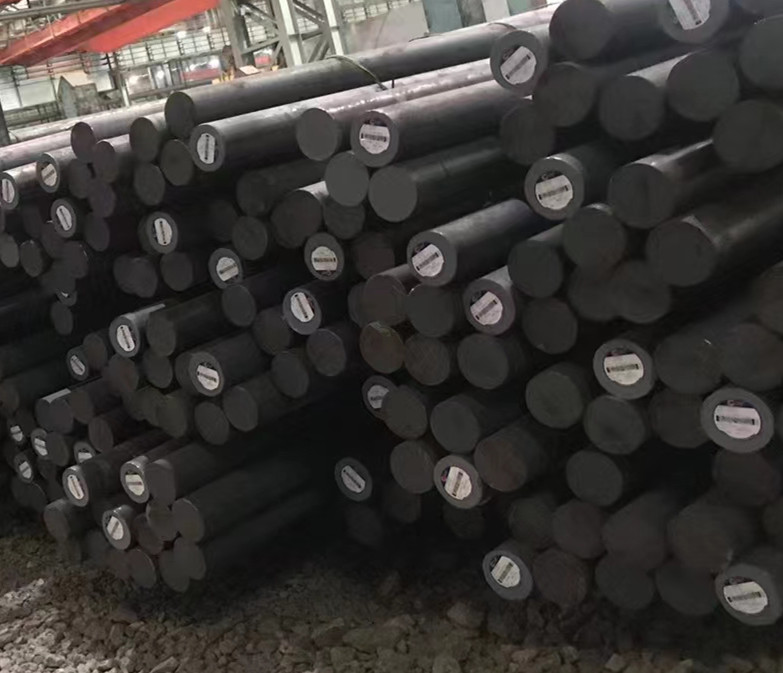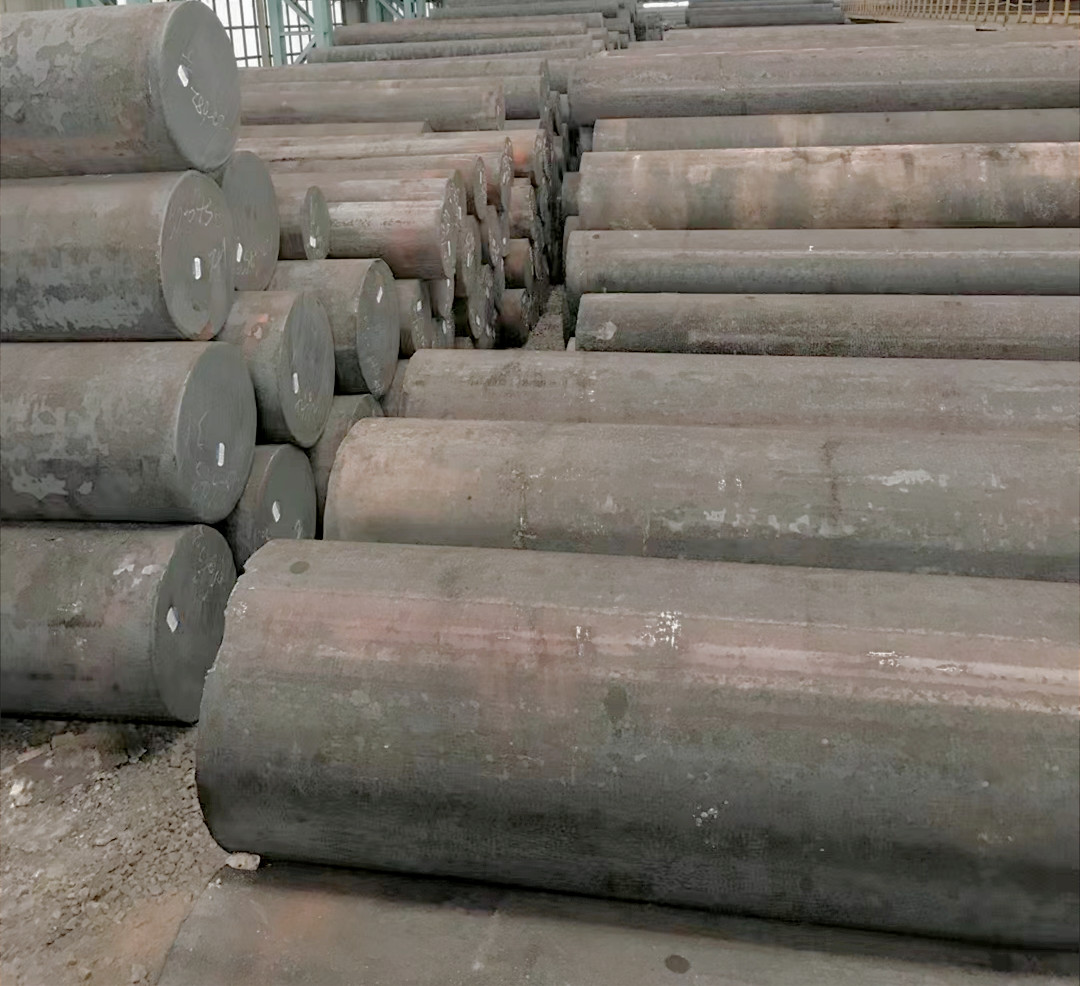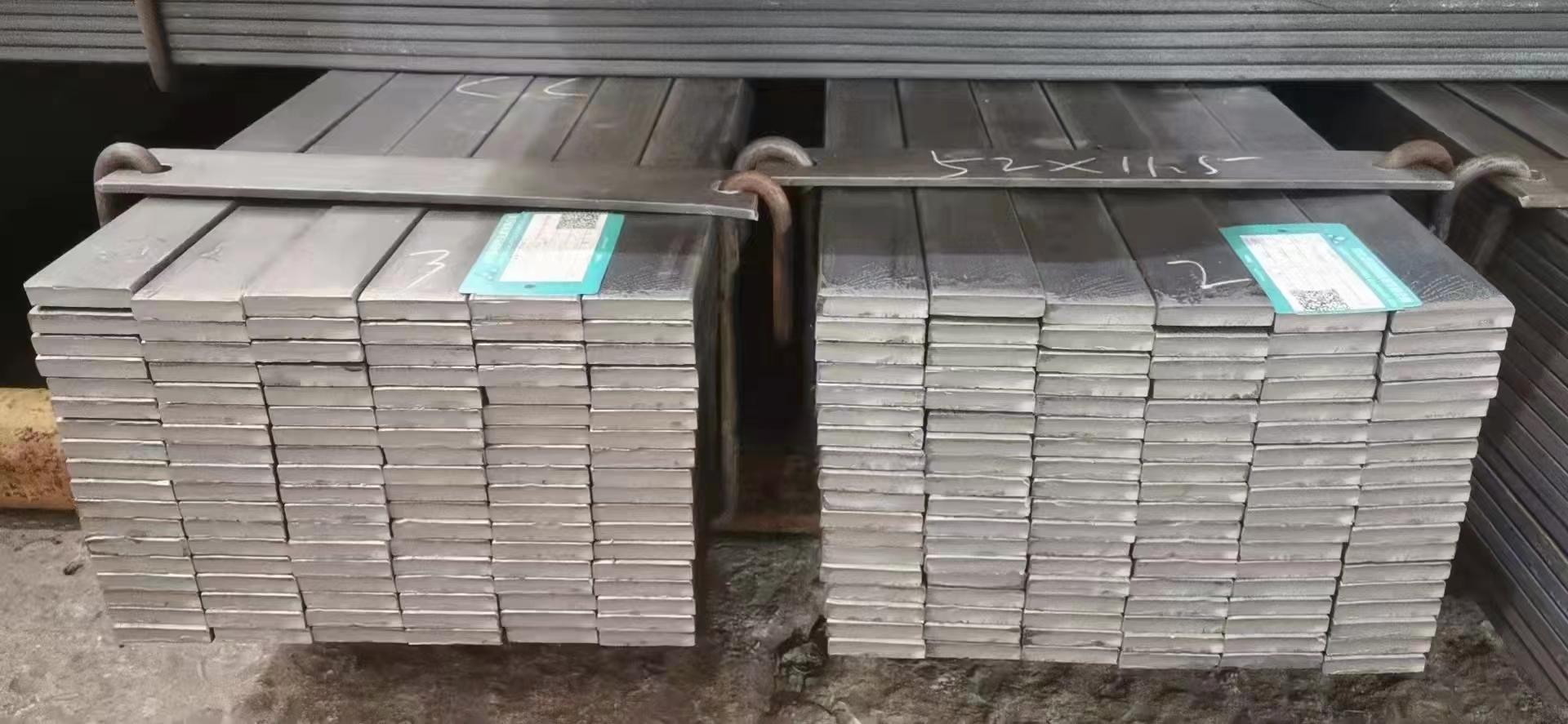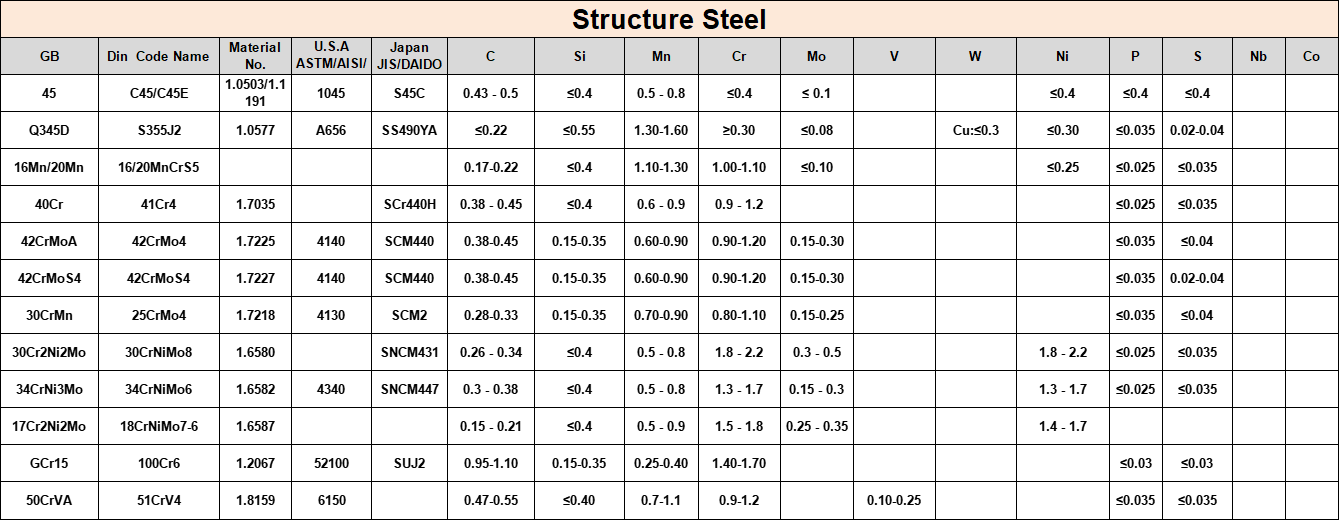Available size
Plate:12-120X2100-2300X3000-5800mm
Flat bar:12-120X155-2300X2100-2300/3000-5800mm
Round bar:Dia12-800X3000-5800mm Or as per coustomer requirment customize
Alloy structural steel, used as mechanical parts and various engineering components and contains one or several alloying elements in a certain amount of steel. Introduce This kind of steel, due to its suitable hardenability, after suitable metal heat treatment, the microstructure is uniform sorbite, bainite or extremely fine pearlite, so it has high tensile strength and yield strength. ratio (generally around 0.85), higher toughness and fatigue strength, and lower toughness-brittleness transition temperature, which can be used to manufacture machine parts with larger cross-sectional dimensions. Production Process According to the steel grade and the quality requirements of the steel, the smelting of the alloy structural steel can be carried out by using oxygen top-blowing converter, open hearth, electric arc furnace; or adding electroslag remelting and vacuum degassing. The ingot can be cast by continuous casting or die casting. The ingot should be slowly cooled or hot forged and rolled. When the ingot is heated, the temperature should be uniform and the holding time should be sufficient to improve segregation defects and avoid uneven deformation during forging and rolling; the steel after forging and rolling is small in size, especially carburizing with a carbon content of about 0.2%. Steel should be rapidly cooled above 600°C to avoid aggravating the banded structure; for forgings with larger cross-sections, measures should be taken to eliminate internal stress and white spots. The quenched and tempered steel should be quenched into a martensite structure as much as possible, and then tempered into a sorbite structure; in the carburizing process of the carburized steel, the concentration gradient of the carburizing layer should not be too large, so as to avoid the continuous network on the grain boundary of the carburizing layer. Carbides; nitrided steels must first be heat treated to obtain the desired properties, and then subjected to final finishing before nitriding. After the nitriding treatment, no processing is required except that the brittle and thin "white layer" is removed by grinding. Category It can be divided into ordinary alloy structural steel and special-purpose alloy structural steel. The former includes low-alloy high-strength steel, low-temperature steel, ultra-high-strength steel, carburized steel, quenched and tempered steel and non-quenched and tempered steel; the latter includes spring steel, ball bearing steel, free cutting steel, cold stamping steel, etc. It is required to have high yield strength, tensile strength and fatigue strength, as well as sufficient plasticity and toughness. Generally, electric arc furnace and oxygen top-blowing converter are used for smelting. For those with high requirements, out-of-furnace refining, electroslag remelting or vacuum treatment, vacuum induction furnace smelting or double vacuum smelting, and suitable heat treatment are used. The content of alloying elements in this type of steel is quite high, mainly including corrosion-resistant steel, heat-resistant steel, wear-resistant steel, magnetic steel and special steel with other special physical and chemical properties. Alloy structural steel is widely used in ships, vehicles, aircraft, missiles, weapons, railways, bridges, pressure vessels, machine tools and other structures. Alloy structural steel has better mechanical properties than carbon steel, especially heat treatment。
Plate:12-120X2100-2300X3000-5800mm
Flat bar:12-120X155-2300X2100-2300/3000-5800mm
Round bar:Dia12-800X3000-5800mm Or as per coustomer requirment customize
Alloy structural steel, used as mechanical parts and various engineering components and contains one or several alloying elements in a certain amount of steel. Introduce This kind of steel, due to its suitable hardenability, after suitable metal heat treatment, the microstructure is uniform sorbite, bainite or extremely fine pearlite, so it has high tensile strength and yield strength. ratio (generally around 0.85), higher toughness and fatigue strength, and lower toughness-brittleness transition temperature, which can be used to manufacture machine parts with larger cross-sectional dimensions. Production Process According to the steel grade and the quality requirements of the steel, the smelting of the alloy structural steel can be carried out by using oxygen top-blowing converter, open hearth, electric arc furnace; or adding electroslag remelting and vacuum degassing. The ingot can be cast by continuous casting or die casting. The ingot should be slowly cooled or hot forged and rolled. When the ingot is heated, the temperature should be uniform and the holding time should be sufficient to improve segregation defects and avoid uneven deformation during forging and rolling; the steel after forging and rolling is small in size, especially carburizing with a carbon content of about 0.2%. Steel should be rapidly cooled above 600°C to avoid aggravating the banded structure; for forgings with larger cross-sections, measures should be taken to eliminate internal stress and white spots. The quenched and tempered steel should be quenched into a martensite structure as much as possible, and then tempered into a sorbite structure; in the carburizing process of the carburized steel, the concentration gradient of the carburizing layer should not be too large, so as to avoid the continuous network on the grain boundary of the carburizing layer. Carbides; nitrided steels must first be heat treated to obtain the desired properties, and then subjected to final finishing before nitriding. After the nitriding treatment, no processing is required except that the brittle and thin "white layer" is removed by grinding. Category It can be divided into ordinary alloy structural steel and special-purpose alloy structural steel. The former includes low-alloy high-strength steel, low-temperature steel, ultra-high-strength steel, carburized steel, quenched and tempered steel and non-quenched and tempered steel; the latter includes spring steel, ball bearing steel, free cutting steel, cold stamping steel, etc. It is required to have high yield strength, tensile strength and fatigue strength, as well as sufficient plasticity and toughness. Generally, electric arc furnace and oxygen top-blowing converter are used for smelting. For those with high requirements, out-of-furnace refining, electroslag remelting or vacuum treatment, vacuum induction furnace smelting or double vacuum smelting, and suitable heat treatment are used. The content of alloying elements in this type of steel is quite high, mainly including corrosion-resistant steel, heat-resistant steel, wear-resistant steel, magnetic steel and special steel with other special physical and chemical properties. Alloy structural steel is widely used in ships, vehicles, aircraft, missiles, weapons, railways, bridges, pressure vessels, machine tools and other structures. Alloy structural steel has better mechanical properties than carbon steel, especially heat treatment。










